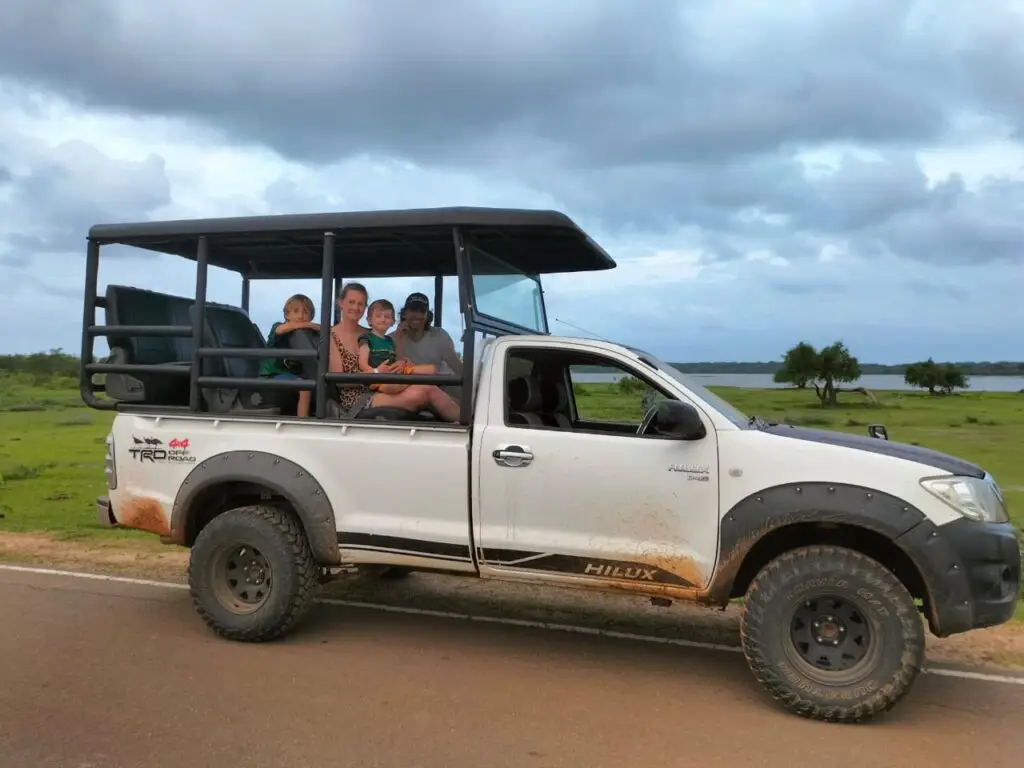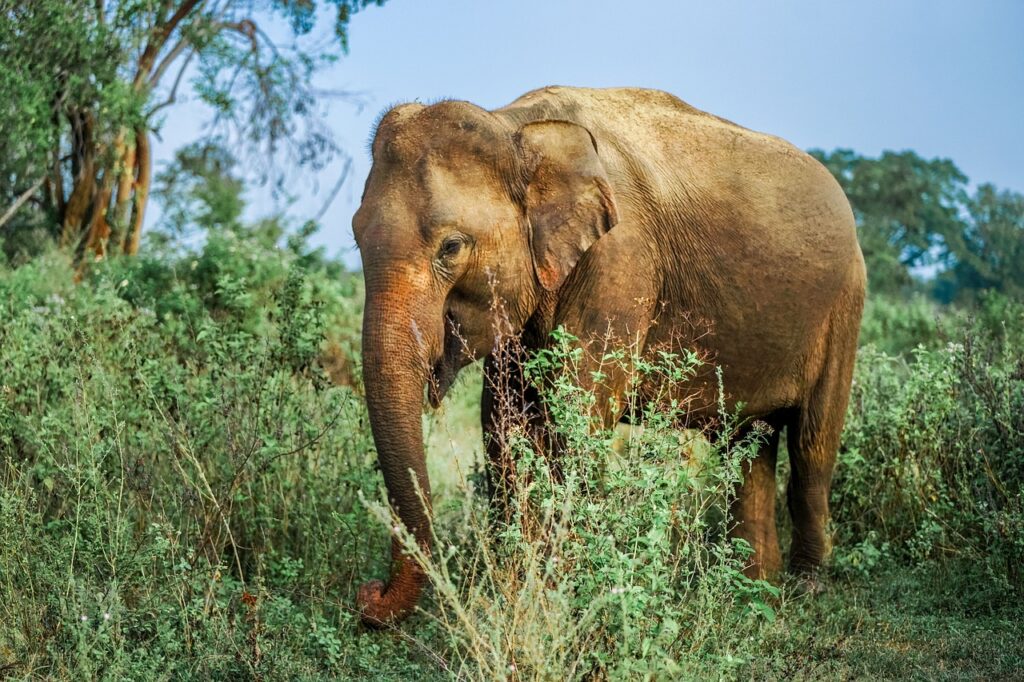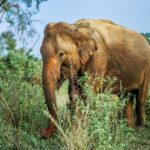Introduction to Sri Lankan Safaris
Sri Lanka, an island nation situated off the southern coast of India, boasts a remarkable array of biodiversity that captivates wildlife enthusiasts from around the globe. The allure of safari in Sri Lanka lies not only in the opportunity to witness exotic species in their natural habitats but also in the rich ecosystems that support such wildlife. From the lush jungles and expansive grasslands to the serene wetlands, this tropical paradise offers a varied landscape that enhances the safari experience.
The country is home to approximately 91 species of mammals, 435 species of birds, and countless reptiles and amphibians, making it an exceptional destination for those interested in exploring nature. Visitors can encounter Safari in Sri Lanka famous residents, including the majestic Asian elephant, elusive leopards, and diverse bird species such as the endangered Sri Lankan blue magpie. Each national park presents its unique offerings, making it essential for travelers to research and choose the parks that best align with their wildlife interests.
The ideal seasons for experiencing safari in Sri Lanka can vary depending on the region. Generally, the dry season from May to September tends to offer the best opportunities for wildlife sightings, particularly in the central and eastern parks. The peak tourism months, from December to March, also coincide with favorable weather conditions across many areas of the country. The growing trend of eco-tourism has further enhanced the Safari in Sri Lanka experience, encouraging sustainable practices that protect wildlife and their habitats while allowing visitors to appreciate the natural beauty of Safari in Sri Lanka responsibly.
With more than 25 national parks to explore, each offering diverse wildlife experiences, Sri Lanka stands out as a premier destination for both seasoned safari-goers and those embarking on their first wildlife adventure. As the country continues to promote responsible tourism, it remains an attractive location for travelers looking to deepen their understanding of global biodiversity.
Top National Parks for Safari in Sri Lanka
Safari in Sri Lanka, known for its breathtaking biodiversity, offers a variety of national parks that attract wildlife enthusiasts and nature lovers alike. Among the most renowned are Yala, Udawalawe, Wilpattu, and Minneriya National Parks—each providing unique landscapes and diverse wildlife experiences.
Yala National Park, the most popular in Safari in Sri Lanka, boasts the highest density of leopards in the world. Visitors can witness majestic elephants, vibrant birds, and numerous other species in their natural habitat. The ideal time to visit Yala is during the dry season from February to July, when animals congregate around water sources, making for excellent viewing opportunities.
Udawalawe National Park is another treasure, especially known for its elephant population. It serves as an important sanctuary for orphaned elephants, which are often rehabilitated here before being released back into the wild. The park’s open grasslands and water holes provide easy spotting of elephants and various bird species. The favorable time to visit Udawalawe is between May and September, coinciding with the dry season when wildlife activity peaks.
Wilpattu National Park, characterized by its unique wetlands, is the largest national park in Safari in Sri Lanka. It features numerous natural lakes or “villus,” where wildlife gathers. Wilpattu is less crowded, providing a serene safari experience. The park is home to sloth bears, leopards, and variety of migratory birds. The months from February to October are considered optimal for visits, particularly during the dry season.
Lastly, Minneriya National Park is famous for the “Gathering,” where hundreds of elephants congregate around the Minneriya Tank during the dry season from July to September. This spectacular event offers unparalleled sights as herds gather, showcasing a remarkable aspect of Safari in Sri Lanka wildlife. Visitors will be captivated by the diverse ecosystems and the opportunity to engage with nature in its purest form.
Wildlife You Can Encounter Safari in Sri Lanka
Safari in Sri Lanka is renowned for its rich biodiversity, making it a premier destination for safari enthusiasts. The national parks of this island nation are home to an array of species, some of which are iconic, while others remain lesser-known yet equally fascinating. One of the most celebrated inhabitants is the Sri Lankan elephant, a large and majestic creature that plays a crucial role in the ecosystem by maintaining the forest’s ecological balance. Their presence not only enriches the landscape but also supports numerous other species that thrive in the habitats they create.
Another iconic species found in Safari in Sri Lanka is the elusive leopard. As a top predator, the leopard helps regulate the populations of herbivores, thus maintaining the health of the environment. The opportunity to spot these magnificent cats adds an element of excitement to any adventure in Sri Lanka’s parks. Birdwatchers are also in for a treat, as the country boasts a wealth of avian diversity. Endemic species, such as the Sri Lankan junglefowl and the Sri Lanka blue magpie, are particularly noteworthy and provide birdwatching enthusiasts with unique sightings.
Beyond the famed giants and predators, the lesser-known creatures also contribute significantly to Sri Lanka’s ecological fabric. Monitor lizards, for instance, are crucial as scavengers, helping to clean up the environment by feeding on carrion. Additionally, various reptiles and amphibians play important roles in their respective niches, making the parks not just a haven for mammals and birds, but for all forms of wildlife.
Conservation efforts in Safari in Sri Lanka aim to protect these diverse species and their habitats. Preserving these ecosystems is vital, as the interconnectedness of species is fundamental to maintaining the balance of nature. The unique wildlife of Safari in Sri Lanka is a testament to the island’s environmental richness, inviting visitors to experience its wonders while also emphasizing the importance of conservation practices for future generations.
Best Time to Go on Safari in Sri Lanka
Understanding the seasonal variations that affect safari experiences in Sri Lanka is crucial for optimizing wildlife viewing opportunities. Sri Lanka boasts a diverse climate, with two distinct monsoon seasons influencing different regions of the island. The dry season, typically extending from February to October, is widely recognized as the best time to go on safari. During this period, water sources become scarce, compelling animals to congregate around remaining water bodies, which significantly enhances wildlife visibility. National parks like Yala and Udawalawe are prime locations during these months, offering a chance to observe a range of wildlife, including elephants, leopards, and various bird species.
On the other hand, the wet season, spanning from November to January, presents a different wildlife experience. While the rainfall can make some areas less accessible, it also results in lush landscapes that attract different species. The greenery during these months provides excellent opportunities for photography and observing smaller wildlife. It is important to note that certain parks remain open year-round, but conditions may vary. For instance, Wilpattu National Park is a popular choice during the wet season, as the increased foliage creates a vibrant habitat for amphibians and birds.
When planning your safari, consider the months from February to June as the prime time for spotting large mammals. Additionally, early mornings and late afternoons are ideal for increased animal activity. Keep in mind that, while the dry season offers superior visibility, the wet season presents its unique beauty and diversity of wildlife Safari in Sri Lanka. Ultimately, the choice of when to go on safari in Sri Lanka will depend on personal preferences, as each season offers distinct advantages for wildlife enthusiasts.
Safari in Sri Lanka Options: Private vs. Guided Tours
Safari in Sri Lanka offers a myriad of safari options for travelers keen on experiencing its rich wildlife and stunning national parks. Among the most popular choices are private jeep rentals, guided tours, and luxury safari lodges. Each choice comes with its own set of advantages and disadvantages that can significantly impact one’s overall experience and budget.
Private jeep rentals provide travelers with the autonomy to explore at their own pace. With this option, individuals or groups can set their own itineraries and choose the parks they wish to visit. The freedom to stop and take photographs as desired can enhance the experience. However, this option also requires some level of familiarity with the parks and wildlife, as well as knowledge of the best times and locations for wildlife sightings. Additionally, unless individuals are experienced, it risks missing out on valuable insights from seasoned guides.
Safari in Sri Lanka guided tours, on the other hand, offer a more immersive experience as trained guides share their knowledge about the flora and fauna, enhancing the safari through narratives and expertise. These tours often come with the added benefit of fixed itineraries that maximize wildlife sightings while ensuring safe navigation through the parks. However, travelers may feel restricted by set schedules and itineraries. Costs can vary widely based on the level of service and the size of the group, with some tours providing all-inclusive packages that can save money in the long run.
Luxury Safari in Sri Lanka lodges offer a premium experience, combining comfort with adventure. Guests at these lodges benefit from guided tours, gourmet meals, and exclusive access to certain areas of the parks. The downside is the cost, which can be significantly higher compared to other options. Ultimately, choosing the right safari experience in Safari in Sri Lanka depends on personal preferences and budget considerations. Those seeking flexibility may prefer private rentals, while those desiring insightful knowledge might lean towards guided or luxury options.
Essential Travel Tips for Safari in Sri Lanka
Preparing for a safari in Sri Lanka requires careful planning to ensure a comfortable and enjoyable experience. One of the first considerations is appropriate clothing. Light, breathable fabrics are recommended, particularly in neutral colors that blend into the natural environment. This not only aids in comfort during the warmer hours but also helps minimize the risk of startling wildlife. It is wise to pack long-sleeved shirts and trousers to protect against sun exposure and insect bites, especially during dawn and dusk when wildlife activity is high.
In terms of gear, a good pair of binoculars can significantly enhance the safari experience. They allow travelers to observe wildlife from a safe distance, adding to the overall enjoyment. A quality camera with a zoom lens is highly recommended for capturing the stunning landscapes and diverse wildlife you may encounter. Additionally, consider packing a reusable water bottle to stay hydrated and reduce plastic waste.
Health considerations should be taken into account prior to embarking on your Safari in Sri Lanka. Travelers are advised to check with healthcare professionals about necessary vaccinations, which may include those for hepatitis A, typhoid, and tetanus. It is important to carry insect repellent containing DEET to protect against mosquito bites which can transmit diseases. Basic first aid supplies, including antiseptics, band-aids, and antihistamines, are also beneficial to address minor injuries or allergic reactions that may arise during your travels.
Safety is paramount when approaching wildlife. Always maintain a respectful distance from animals, never attempt to feed them, and follow the guidance of your safari guide. Understanding the behaviors of different species can also enhance your experience, allowing for safer and more respectful wildlife observation. Following these essential travel tips can significantly enhance the quality of your safari adventure in Sri Lanka, making it both a memorable and safe journey.
Cultural Etiquette and Responsible Wildlife Viewing
Embarking on a safari in Sri Lanka presents an unparalleled opportunity to witness the country’s rich biodiversity and unique wildlife. However, it is imperative for visitors to be mindful of cultural etiquette and engage in responsible wildlife viewing practices. Respect for local customs not only enhances the visitor experience but also fosters a deeper appreciation for the natural environment.
When engaging with local communities, it is essential to demonstrate respect for their traditions and lifestyle. Visitors should greet locals courteously and inquire about cultural norms. In many parts of Sri Lanka, modest dress is appreciated, particularly in rural areas and near religious sites. Observing local customs, such as removing shoes before entering a home or temple, reflects respect and can help foster positive interactions.
Responsible wildlife viewing is crucial to ensure the protection of Sri Lanka’s diverse fauna and their habitats. Safari in Sri Lanka should prioritize minimal disturbance to animals and their environment. It is vital to maintain a safe distance from wildlife, particularly during sightings of sensitive species such as elephants or leopards. Approaching animals too closely can lead to stress or aggressive behavior, potentially harming both the visitor and the wildlife.
Visitors should also refrain from feeding animals, as this can disrupt their natural behaviors and lead to dependency on human-provided food. Additionally, it is advisable to adhere to the guidelines set by national parks and wildlife authorities, including sticking to designated paths and respecting barriers. By doing so, tourists can help preserve the ecological balance and support conservation efforts while enjoying their safari experience.
In conclusion, understanding cultural etiquette and fostering responsible wildlife viewing practices are essential when participating in a safari in Sri Lanka. By approaching this experience with respect for both local customs and the environment, visitors can contribute to the preservation of the island’s natural heritage while enjoying unforgettable wildlife encounters.
Where to Stay: Accommodation Options Safari in Sri Lanka
Sri Lanka’s national parks offer a variety of accommodation options catering to diverse preferences and budgets. When planning a safari, choosing the right place to stay can enhance the overall experience, allowing visitors to immerse themselves in the unique wildlife and stunning landscapes.
For those traveling on a budget, numerous guesthouses and hostels are available in nearby towns. These options often provide a comfortable stay at an affordable price, allowing travelers to allocate more of their budget to safari experiences and activities. Budget accommodations typically offer basic amenities but can provide authentic local experiences and opportunities to interact with residents. Examples of budget guesthouses include Cozy Hut in Yala and Sinha Villa in Udawalawe.
Mid-range accommodations often come in the form of boutique hotels and lodges. These properties usually feature a more personalized service, comfortable rooms, and often, on-site dining options. Staying in a mid-range eco-lodge, such as Jetwing Vil Uyana in Sigiriya or Cinnamon Wild in Yala, allows visitors to enjoy stunning views of the surrounding nature while remaining budget-friendly.
For a more immersive experience, visitors may consider staying inside the national parks. These accommodations offer proximity to wildlife sightings and allow for convenient access to guided tours at dawn or dusk when animals are most active. However, these lodges tend to come at a premium rate and may have limited dining options compared to nearby towns. Still, the unforgettable experience of waking up to the sounds of the jungle can outweigh the costs, especially at places like The Elephant Stables in Minneriya.
Ultimately, the choice of accommodation will depend on individual preferences and budget considerations. Whether opting for a cozy guesthouse, an eco-lodge, or a luxurious tented camp, visitors are sure to find a suitable base for their Sri Lankan safari adventure.
Conclusion: Embarking on Your Sri Lankan Safari Adventure
As you consider embarking on a safari in Sri Lanka, it is essential to reflect on the transformative experiences that await you in this island nation. The rich biodiversity, unique wildlife, and lush landscapes of Sri Lanka’s national parks offer each visitor an unparalleled opportunity to connect with nature. From the majestic elephants of Udawalawe to the elusive leopards of Yala, the variety of animals found in these parks will leave you with lifelong memories.
Engaging with wildlife in Sri Lanka is more than just observation; it is an invitation to understand and appreciate the delicate ecosystems that support these magnificent creatures. Responsible wildlife tourism practices enable you to enjoy your adventure while ensuring the preservation of habitats and wildlife. By choosing eco-friendly options, respecting wildlife guidelines, and supporting local communities, you contribute to the sustainable future of the nation’s wildlife and cultural heritage.
Planning is crucial for a successful Sri Lankan safari. Utilize the information provided in this guide to tailor your itinerary, ensuring each moment spent is both rewarding and insightful. Whether you are a seasoned traveler or a first-time explorer, the national parks of Sri Lanka offer a myriad of experiences that cater to all levels of adventure. From thrilling safaris at dawn to tranquil moments in the midst of nature, every excursion can be tailored to fit your interests and preferences.
In conclusion, the allure of Sri Lanka’s wildlife and the breathtaking scenery of its parks are simply irresistible. So, pack your bags and get ready for an unforgettable journey into the heart of nature, as you explore the myriad wonders that await you in this extraordinary island paradise.





















